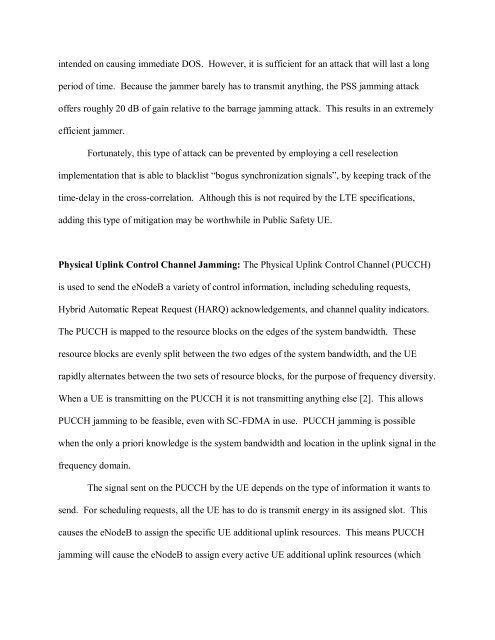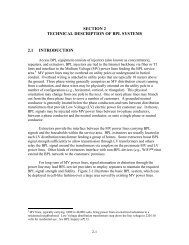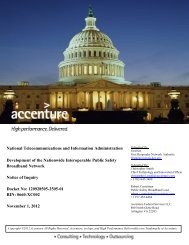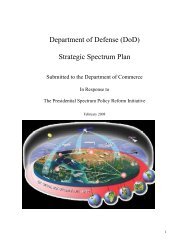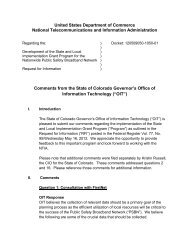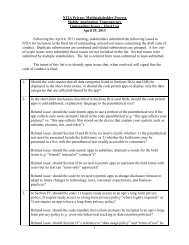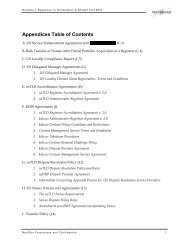Virginia Tech Letterhead - National Telecommunications and ...
Virginia Tech Letterhead - National Telecommunications and ...
Virginia Tech Letterhead - National Telecommunications and ...
You also want an ePaper? Increase the reach of your titles
YUMPU automatically turns print PDFs into web optimized ePapers that Google loves.
intended on causing immediate DOS. However, it is sufficient for an attack that will last a long<br />
period of time. Because the jammer barely has to transmit anything, the PSS jamming attack<br />
offers roughly 20 dB of gain relative to the barrage jamming attack. This results in an extremely<br />
efficient jammer.<br />
Fortunately, this type of attack can be prevented by employing a cell reselection<br />
implementation that is able to blacklist “bogus synchronization signals”, by keeping track of the<br />
time-delay in the cross-correlation. Although this is not required by the LTE specifications,<br />
adding this type of mitigation may be worthwhile in Public Safety UE.<br />
Physical Uplink Control Channel Jamming: The Physical Uplink Control Channel (PUCCH)<br />
is used to send the eNodeB a variety of control information, including scheduling requests,<br />
Hybrid Automatic Repeat Request (HARQ) acknowledgements, <strong>and</strong> channel quality indicators.<br />
The PUCCH is mapped to the resource blocks on the edges of the system b<strong>and</strong>width. These<br />
resource blocks are evenly split between the two edges of the system b<strong>and</strong>width, <strong>and</strong> the UE<br />
rapidly alternates between the two sets of resource blocks, for the purpose of frequency diversity.<br />
When a UE is transmitting on the PUCCH it is not transmitting anything else [2]. This allows<br />
PUCCH jamming to be feasible, even with SC-FDMA in use. PUCCH jamming is possible<br />
when the only a priori knowledge is the system b<strong>and</strong>width <strong>and</strong> location in the uplink signal in the<br />
frequency domain.<br />
The signal sent on the PUCCH by the UE depends on the type of information it wants to<br />
send. For scheduling requests, all the UE has to do is transmit energy in its assigned slot. This<br />
causes the eNodeB to assign the specific UE additional uplink resources. This means PUCCH<br />
jamming will cause the eNodeB to assign every active UE additional uplink resources (which


